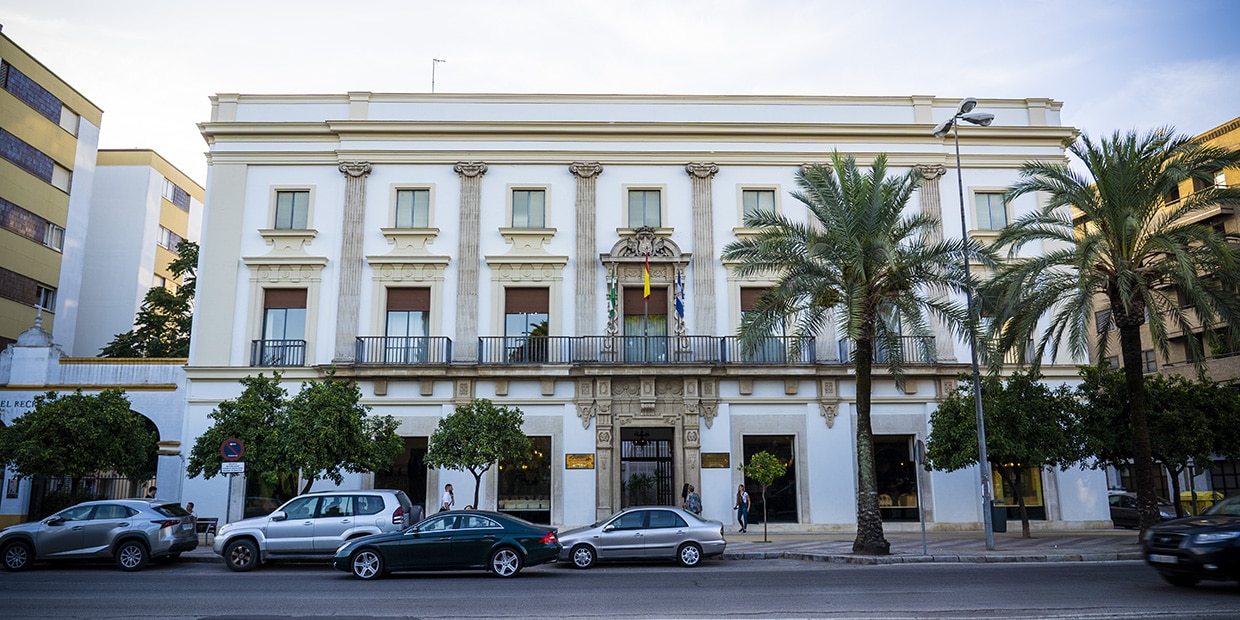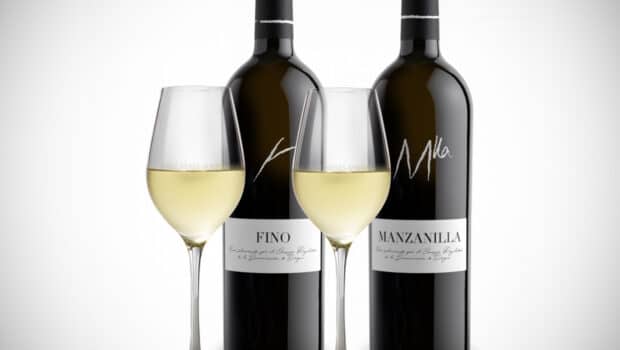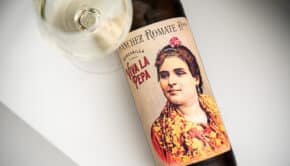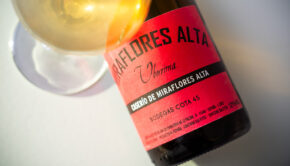Fino versus Manzanilla: an internal conflict
In the past few days the sherry region has been overshadowed by an internal conflict, and if you dig deeper, you’ll notice it is a deeply rooted conflict between winemaking traditions and cities. Keeping a delicate balance of power between Sanlúcar and Jerez has never been easy, and now it seems to be blocked entirely. The year 2020 has been extremely difficult for wineries already but having internal divisions isn’t going to help.
Unfortified sherry: European legislation
The recent trigger for the resurgence of this debate is the allowance of unfortified sherry, or more precisely sherry that achieves the required strength in a natural way. There’s a wide agreement in the sector to change the regulations of the D.O. and eliminate the requirement to add neutral grape spirit for the production of sherry wines. A case was filed before the European Commission, requesting the approval of new technical specifications.
However the Commission came back with a few questions, including further clarification of the differences between Manzanilla and Fino. They claim the two D.O.s Jerez-Xérès-Sherry and D.O. Manzanilla de Sanlúcar contravene in terms of naming and production methods. At the same time they asked further clarification on the differentiation of the ‘maturation zone’ and the ‘production zone’.
These differences have been a stumbling block for over 10 years. Back in 2008 the idea was launched to merge the technical specifications of Manzanilla and Fino (same grape, terroir, production method…) with a different name only based on the location of maturation. Manzanilla producers took this as an attack on the unique character of their wines, saying the specific microclimate was ignored and their autonomy was sacrificed.

The Consejo Regulador in Jerez
Fino from Sanlúcar
Part of the problem lies in the fact that winemakers in Sanlúcar are legally allowed to produce both Manzanilla and Fino in the same bodega.
They use the name Manzanilla for the classical lighter wines and Fino for those that are a bit more full-bodied (with a less vigorous flor), usually related to the microclimatic profile of a certain (part of a) bodega building. To understand this, we have to go back to the creation of the denominations of origin. In 1933 the D.O. Jerez-Xérès-Sherry was established, including Manzanilla as one of the allowed typologies. However back then the wine could be aged in the entire sherry region, and different copies could be found around Spain.
Over the years a growing appreciation and understanding of the differences between Manzanilla and Fino, as well as a lawsuit between Pedro Domecq and winemakers in the town called Manzanilla (province of Huelva) led to the foundation of a separate D.O. Manzanilla de Sanlúcar in 1964. At this point, in an attempt to protect the brand Manzanilla as much as possible, Manzanilla became exclusive to Sanlúcar. However the reciprocity of this rule for the name Fino was not demanded.
Sanlúcar as the inventor of flor
While the Fino de Sanlúcar may be an inconsistency in the technical specifications of the D.O., it can partly be understood from a climatological point of view: biological ageing was invented and perfected in Sanlúcar, where humid sea air helps to get a layer of flor that is more vivid than in Jerez. In the first years of production it can be very difficult to set a Fino and Manzanilla apart, but the fact that Jerez and El Puerto are warmer and the flor (almost) disappears for a few months in summertime (leading to slight oxidation) means the wines are driven apart as they get older.
You can produce both Manzanilla and slightly oxidized Manzanilla (called Fino) in Sanlúcar, but you can never produce true Manzanilla in Jerez or El Puerto, simply because climatic conditions don’t allow vigorous flor throughout the whole year.

Fino de Sanlúcar from Barbadillo
Nervous reactions due to slow markets
Bodegas Barbadillo for instance (who have a member in the plenary sessions of the D.O.) produce both Manzanilla and Fino (see Fino Mil Pesetas or Barbadillo Fino) as part of a commercial strategy to sell a complete range of sherry wines of all possible types. This is a smart solution for export markets which usually have a preference for a certain profile. A ban on the so-called Fino de Sanlúcar would require them to open premises in Jerez or buy Fino from an external supplier.
In both cases this means lower profits, so they defend the acquired right to use the name Fino. When the market was healthy and profitable, nobody seemed to care about a few litres of wine being sold as Fino by bodegas in Sanlúcar. Now that the market is significantly worse, bodegas are more nervous and try to defend their piece of the pie.
Obviously the request of the European Commission to clarify the differences between Fino and Manzanilla is problematic. Two names are in use for basically the same wine, with no explicit technical difference and no clear-cut provenance either. The Consejo has been trying to solve this for over ten years and although it has regularly been put on the agenda, an agreement was never found. With the (essentially unrelated) change of regulations for unfortified sherry the Consejo Regulador is forced to tackle this old problem.
Merging the D.O. Jerez-Xérès-Sherry and D.O. Manzanilla?
The most important voice in the discussions is Fedejerez, the largest association of bodegas in the sherry region, representing 27 companies (González Byass, Lustau, José Estévez, Williams & Humbert, Osborne, Fernando de Castilla…), most of them located in Jerez de la Frontera. They already asked to stop selling wines from Sanlúcar under the name Fino, recalling the fact that Jerez had to give up the name Manzanilla in 1964.
Fedejerez went even further and proposed to merge the D.O. Jerez-Xérès-Sherry and D.O. Manzanilla, essentially going back to the situation before 1964. However a small group of bodegas in Sanlúcar (Hidalgo La Gitana, La Cigarrera, Argüeso and Yuste – associated as Bodegas de Sanlúcar) reacted furiously to this proposal, calling it another insult towards Sanlúcar. They claim it undermines the history of their wine and don’t see it as a merger but as an elimination of their own D.O. Manzanilla.
It should be noted that it is not necessarily a battle between Sanlúcar and Jerez. For instance the biggest brand La Guita is fully aligned with the proposal of Fedejerez. However this small group of Sanluqueño producers is prepared to go further and submitted a counter proposal to become an entirely separate D.O., blowing up all existing links between both winemaking zones.
It has become a rather emotional debate with people throwing dirt on social media before awaiting the negociations. At the moment the whole issue seems to be blocked, having two entirely opposite stands on the future of the sherry sector.

Bag-in-box sherry
There has been an important precedent for this kind of internal fight: the Bag in Box. Especially Manzanilla was often sold in 5-litre cardboard boxes with a tap. However Fedejerez (again) claimed it was hurting the premium image of sherry. This discussion lasted many years, including a few punches below the waist (like Argüeso / Yuste selling Manzanilla as a declassified ‘Fina wine’, boxed without the seal of the D.O.).
Bag in Box was quite succcesful (especially during the Ferias) but it was seen as a packaging specific to Manzanilla – a good reason for bodegas in Jerez to bury BIB entirely. Proposals for intermediary solutions (like restricting BIB to the catering trade) were not succesful. This fight ended in 2019 with the Supreme Court banning all other packaging except glass bottles. Again we should stress that some producers in Sanlúcar were also against the Bag-in-box packaging.
Expansion of the ageing zone
The expansion of the ageing zone is another point of debate. Some are in favour of expanding the maturation area outside of the three key cities, allowing so-called production bodegas in towns like Chipiona or Trebujena to market their wines as sherry. At the moment they can grow grapes and sell their mosto to bodegas in the sherry triangle, and they claim this provenance may be more important than the location of the maturing wine.
This is another essential question from the European Commission: if there is no critical difference between a Fino and a Manzanilla, and no absolute geographical restriction, then why can’t you age wine in a neighbouring town that is already allowed to provide the grapes for both types of wine?
In an attempt at drawing more attention to the considerations of wineries in Sanlúcar, a special Technical Commission for Manzanilla saw the light at the end of 2019, despite fierce opposition from Fedejerez. This commission, which works within the structure of the Consejo Regulador, is similar to what is in place for sherry vinegar. It will address issues, communication strategies, commercial plans… specifically related to Manzanilla. Another proof of the fact that all parties are trying to gain more weight in the Consejo Regulador.
Calimero
All these issues highlight the politicization of winemaking in the region and bring back a long-standing rivalry between Sanlúcar and Jerez. Some bodegas in Sanlúcar often feel shortchanged and quickly take a firm stance. They’re also passionately defending the fact that Manzanilla should not be considered a sherry wine.
We could argue Manzanilla has been suffering from a Calimero complex for some time. Historically Sanlúcar has been in the shadow of Jerez where the larger bodegas were founded. There’s some truth to the generalization that Sanlúcar is a town of humble peasants and vine growers whereas Jerez has this aristocrat atmosphere with posh town palaces, foreign investments, a cathedral and English manners.
Sanlúcar has always been outnumbered, with less representatives and less voting power in the Consejo Regulador (recently increased to 2 out of 10 – it used to be just one). This may have caused the feeling that they are unable to come up with new ideas (like the bag-in-box) or at least not push them through unless they’re backed by the big bodegas in Jerez.
Manzanilla as the local sales champion
We all know sales of sherry wines have dropped significantly in recent times. However Manzanilla is still going strong, after all it has always been a wine for local comsumption, with half of the yearly production sold during the ferias in Andalusia.
The Spanish market in general has been more stable than export markets, so Manzanilla producers are now stressing the fact that their product is stronger than the export-oriented Fino. But since Fino is still bigger in absolute (international) figures they feel forced to undergo the political power from Jerez. I quote the spokesman of Bodegas de Sanlúcar: “It is time to shake of the yoke that Fedejerez and the large companies in Jerez exert on Manzanilla. Sanlúcar must have its own decision-making power, with a separate Consejo.”
Recent developments
Update December 2020: There seems to be a growing consensus that would prevent bodegas in Sanlúcar to produce Fino wines and at the same time equate the production zone with the ageing zone so that wineries from Trebujena, Chipiona or Chiclana can market their wines with the seal of the D.O. Jerez. There’s no official agreement though, and bodegas from Sanlúcar have already announced they would challenge it in court.
Update January 2021: The producers of Manzanilla now want to establish a separate D.O. Manzanilla, entirely on its own. They’ve made a request to do so before the Ministry of Agriculture. They can’t live with the idea that Manzanilla is seen as “just another type of sherry wine” and the fact that they are outnumbered in the Consejo Regulador.
People from Sanlúcar are clearly sensitive to the linguistic fact that sherry wines (including Manzanilla) are generally marketed as vinos de Jerez, “wines from Jerez de la Frontera”, which they see as a disrespect of their own town Sanlúcar. It has become a tale of two opposing towns and the tone of voice is becoming very grim. At the same time the discussions are diverging ever more, mixing all kinds of problems while the basic problem, the inconsistency of a ‘Fino de Sanlúcar’, is lost entirely…
Update May 2021: An agreement was signed which will unblock the issues and lead to new regulations for the D.O. Jerez-Xérès-Sherry and D.O. Manzanilla de Sanlúcar.
Update August 2021: This entire conflict have led to the acceptance of new regulations for the D.O. Jerez-Xeres-Sherry (which become active in October 2022). It solves the majority of discussion points and opens the door to an exciting future for the region.
Further reading
If you speak Spanish, you can check Diario de Jerez for more articles:
- Los jereces sin fortificar superan el trámite de la Junta y llegan a Bruselas
- Fedejerez propone fusionar el vino de Jerez y la Manzanilla de Sanlúcar
- Y las bodegas de Sanlúcar piden la independencia de la manzanilla
- El incierto futuro del Marco de Jerez
- La encrucijada de la amplicación de la zona de crianza y el ‘Bag in Box’
- El vino de Jerez aplaza otra semana la respuesta a Bruselas sobre el fino de Sanlúcar











